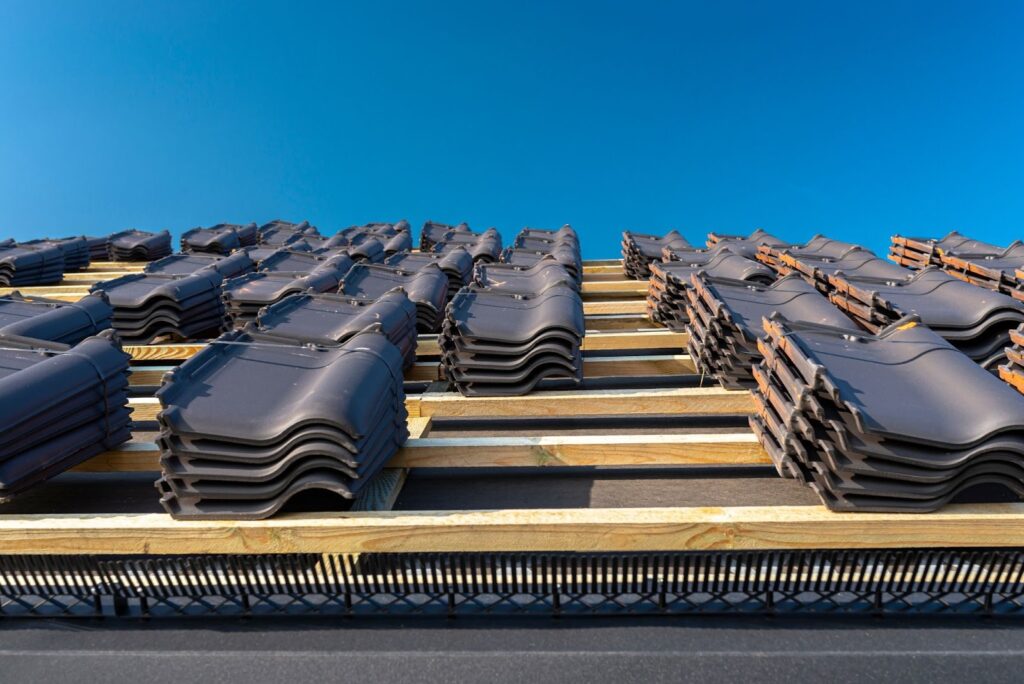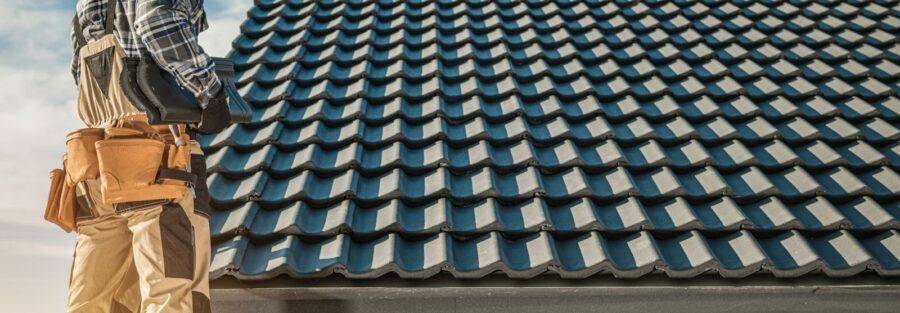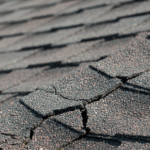Spotting a cracked, leaking, or slipped roof tile after a North Texas storm can be stressful. In DFW, intense sun, hail, and high winds put tile roofs to the test. At Alpine Roofing, we handle tile repairs with the care they demand, safely, to code, and built to last. Whether you need an inspection, targeted repairs, or full restoration after storm damage, our local team treats your home like a sanctuary and ensures every repair is done right.
Safety And Assessment Before You Start
Before any discussion of how to fix roof tiles, safety and a thorough assessment come first. Tile roofing sits on steep, often fragile surfaces. Tiles can crack underfoot, and falls are a real risk. We never step onto a tile roof without a plan for safe access, load distribution, and weather windows that won’t put the home, or anyone on site, at risk.
Identify Tile Type And Damage Scope
Different tiles need different repair methods. We identify whether your system uses clay, concrete, or composite tiles—whether they’re interlocking, flat, or S-profile—and which fastening system (nails, clips, or hooks) is in place. Then we map damage: isolated cracks, slipped courses, impact breaks from hail, or systemic failure. We also note underlayment age and batten condition, because what’s under the tile often causes what you see on top.
Weather, Roof Access, And Fall Protection
We only work in dry, mild conditions with stable winds. Access ladders are tied off, anchor points are set, and walk pads or roof ladders spread weight to avoid tile breakage. That careful approach prevents new damage while we address the existing issues.
Leak Tracing And Interior Checks
Inside, we look for water staining, damp insulation, or swollen drywall. Outside, we trace the path from a visible leak back upslope, checking valleys, penetrations, and ridge lines. It’s common for a leak to show up 5–10 feet downslope from the source on a tile roof. Finding the true origin is key to how to fix roof tiles the right way the first time.
For a professional roof assessment in DFW, you can explore our roofing services.
Step-By-Step Repairs For Common Tile Problems

Below is a high-level look at how we approach the most common tile issues. This isn’t meant as a DIY guide; tile systems are heavy, fragile, and easy to damage if handled incorrectly. Our process keeps your warranty and safety intact.
Replacing Broken Or Missing Tiles
We remove adjacent tiles carefully, release fasteners or clips, and inspect battens and underlayment. If the underlayment is compromised, we repair that substrate before setting a new tile. Then we refasten per spec and relay surrounding tiles to maintain shingling, headlap, and water channels. That’s the professional foundation of how to fix roof tiles without creating future leak points.
Repairing Cracked Tiles
Hairline cracks near the nose or corner can signal impact or thermal stress. Depending on the system, we replace rather than patch to preserve structural integrity. If an emergency weather-tight seal is required, we use manufacturer-approved methods as a temporary measure and schedule a proper tile swap.
Re-Securing Slipped Or Loose Tiles
Slippage often traces back to worn fasteners, failed clips, or underlayment deterioration. We reset tiles with the correct mechanical fixing and address the underlying cause, replacing corroded nails, adjusting battens, or correcting alignment. A simple “push back” fix won’t hold: proper securement is central to how to fix roof tiles that have shifted.
Final Waterproofing Checks
Once repairs are made, we water-test targeted areas, verify drainage paths, and confirm that side laps and interlocks are debris-free. Then we inspect interior spaces after rain to ensure the path is dry.
Special Areas: Ridges, Valleys, And Flashings
Leak sources on tile roofs often cluster at transitions. Understanding how to fix roof tiles here means tackling the assembly, not just the visible surface.
Re-Bedding And Re-Pointing Ridge Or Hip Tiles
On older roofs, ridge and hip tiles may sit on mortar that has fractured with thermal movement. We remove loose sections, verify ridge boards and hip irons, and re-bed with modern, flexible systems where appropriate. We re-point joints for a clean, wind-resistant finish that won’t trap water.
Clearing And Repairing Valleys
Valleys move the most water. We clear debris, inspect the metal valley pan for rust or punctures, and check cut tile edges for proper clearance. If we find underlayment failure, we open the valley, replace the membrane, re-seat the metal, and relay cut tiles to restore full flow capacity.
Flashing Around Chimneys, Vents, And Skylights
Counter-flashing, step flashing, and saddle details are frequent culprits. We evaluate for loose mortar joints, failed sealant, or improperly lapped metal. Corrective work re-establishes the layered waterproofing, base flashing, step flashing, and counter-flashing in the right order so wind-driven rain can’t back up under tiles.
Preventive Maintenance And When To Call A Professional

The smartest approach to how to fix roof tiles is proactive care and knowing when the job’s too risky or complex to tackle without a licensed crew.
Underlayment, Battens, And Ventilation Red Flags
Underlayment is the real waterproofing on a tile roof. If it’s brittle, torn, or UV-damaged at edges, spot repairs won’t last. Soft or rotted battens also signal deeper issues. Inadequate attic ventilation can cook underlayment from beneath, reducing lifespan.
Cleaning, Moss Control, And Gutter Care
Keep valleys and gutters clear so water moves fast during downpours. Moss holds moisture against tiles and can pry them apart. If present, we remove it with roof-safe methods that won’t damage the tile glaze or wash granules from adjacent materials.
Post-Storm Inspection Checklist
After hail, high winds, or falling limbs, we check for broken noses/corners, fractures along water channels, displaced ridges/hips, dented metal valleys, damaged flashings, and interior stains. Quick documentation helps if you pursue an insurance claim.
Structural Damage, Widespread Leaks, Or Steep Roofs
If you notice sagging, multiple leak points, or anything beyond a small, isolated issue, call us immediately. Steep slopes and multi-story access add fall risk. Professional crews have the equipment and training to do it safely and correctly.
Stay ahead of damage with a maintenance visit or learn more about our restoration services.
Conclusion

If you’ve been researching how to fix roof tiles, the big takeaway is this: quality tile repair is a system fix, not a surface patch. In DFW’s tough climate, the right tile, fastening method, flashing detail, and underlayment repair make all the difference in longevity and leak prevention. We handle those details every day and stand behind the work.
For fast help or a thorough inspection in DFW Texas, call Alpine Roofing at +1 682-257-4631 or reach us through our contact page.
Alpine Roofing is your trusted roofing company in DFW Texas. We’re located at 7247 Kentish Dr, Fort Worth, TX 76137. For inquiries, call us at +1 682-257-4631 or email info@alpineroofingandsolar.com. Ready to get started? Explore our roofing services and restoration services—we’re here to protect your home with craftsmanship you can trust.
Frequently Asked Questions
How do I know when my roof tiles need repair?
Look for visible cracks, broken or missing tiles, slipped tiles, or water stains inside your home. Regular inspections help catch issues early.
Can cracked or broken tiles be repaired without replacing the whole roof?
Yes. Many damaged tiles can be replaced individually, and minor cracks can sometimes be sealed temporarily until full repair is done.
How long does a tile roof typically last?
Clay tiles can last 50–100 years, and concrete tiles usually last 40–50 years with proper maintenance and underlayment care.
What maintenance helps extend the life of a tile roof?
Keep gutters and valleys clear, remove moss or debris, check ventilation, and schedule professional inspections after storms.
Are tile roof repairs safe for DIY homeowners?
Tile roofs are heavy and fragile. Repairs should be done by licensed professionals to avoid personal injury and prevent further damage.




